‘His mother wept for hours’: The stories behind Iraq’s deadly mass protests
Thousands of people have taken to the streets in Iraq throughout October, with hundreds losing their lives
Your support helps us to tell the story
From reproductive rights to climate change to Big Tech, The Independent is on the ground when the story is developing. Whether it's investigating the financials of Elon Musk's pro-Trump PAC or producing our latest documentary, 'The A Word', which shines a light on the American women fighting for reproductive rights, we know how important it is to parse out the facts from the messaging.
At such a critical moment in US history, we need reporters on the ground. Your donation allows us to keep sending journalists to speak to both sides of the story.
The Independent is trusted by Americans across the entire political spectrum. And unlike many other quality news outlets, we choose not to lock Americans out of our reporting and analysis with paywalls. We believe quality journalism should be available to everyone, paid for by those who can afford it.
Your support makes all the difference.What started as a relatively small gathering in Baghdad’s Tahrir Square on 1 October to protest unemployment, corruption and social injustice has morphed into some of the largest mass demonstrations that Iraq has seen in recent time, spawning a bloody crackdown by security forces.
At least 69 Iraqis were killed and hundreds wounded on Friday and Saturday as part of a second wave of protests. At least 225 people have been killed this month.
A government investigation, released last week to seemingly try and calm tensions, acknowledged the use of live ammunition by security forces and the deaths of 149 civilians and eight security personnel. The report said that 70 per cent of deaths were caused by shots to chest and head. Prime Minister Adel Abdul Mehdi ordered several officers and security officials to be relieved of their posts while announcing a number of others would face trial.
Teargas and hot water cannons have also been used, with a number of people dying after being hit by tear gas canisters fired by government forces. Thousands have continued to take to the streets into the weekend across the country from Baghdad to Nasiriya in the south, with government buildings being set on fire.
Some clerics have tried to denounce protesters as being links to the Baath Party, Isis or Israel, but in reality each of those protesting has their own reasons for taking to the streets. Here are the stories behind some of those who have lost their lives.
Amjad Al Budairi, 22
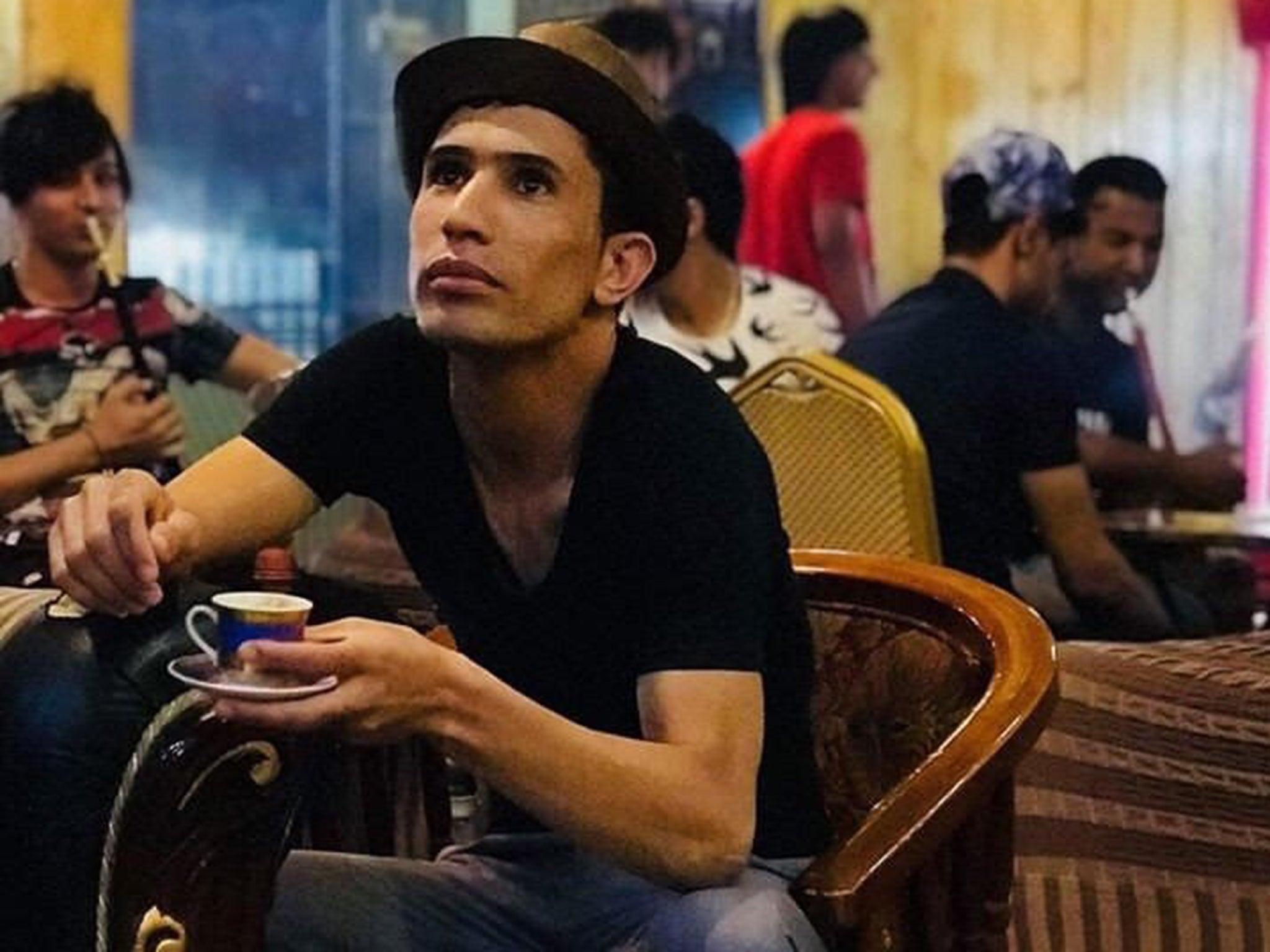
Amjad Al Budairi owned a tea cart selling Iraq’s famous “chai” for less than 25 cents per cup.
In September 2018, authorities in province of Diwaniya ordered all carts and wagons selling wares and edibles in public removed. Though unemployment was a huge problem across the the province and basic services such as electricity and running water were a luxury, authorities believed that removing “illegal” carts was a practical solution. Social media pages posted video footage of municipality workers struggling with Amjad as his cart was confiscated.
Budairi began working as a waiter in a local restaurant for $6 a day. The owner allowed him to keep a chai cart nearby for some additional income. On 2 October Budairi participated in the protests in Diwaniyah province. Arrested, he was later released around midnight. He rejoined the protests around 5pm the next day and never made it home. Amjad’s brother Ahmed al Budairi told the Irfaa Sawtak website that he has shown the committee investigating the death of his brother footage of him being shot. But authorities were said to have been unconvinced that security forces deliberately targeted Amjad and might have been “aiming for the wall”.
Budairi enjoyed taking selfies with friends and writing melancholic posts on social media, like one of his last ones: “Maybe I should love my own sorrow, so it leaves me just as everything I love has”.
Hamza Ali, 26
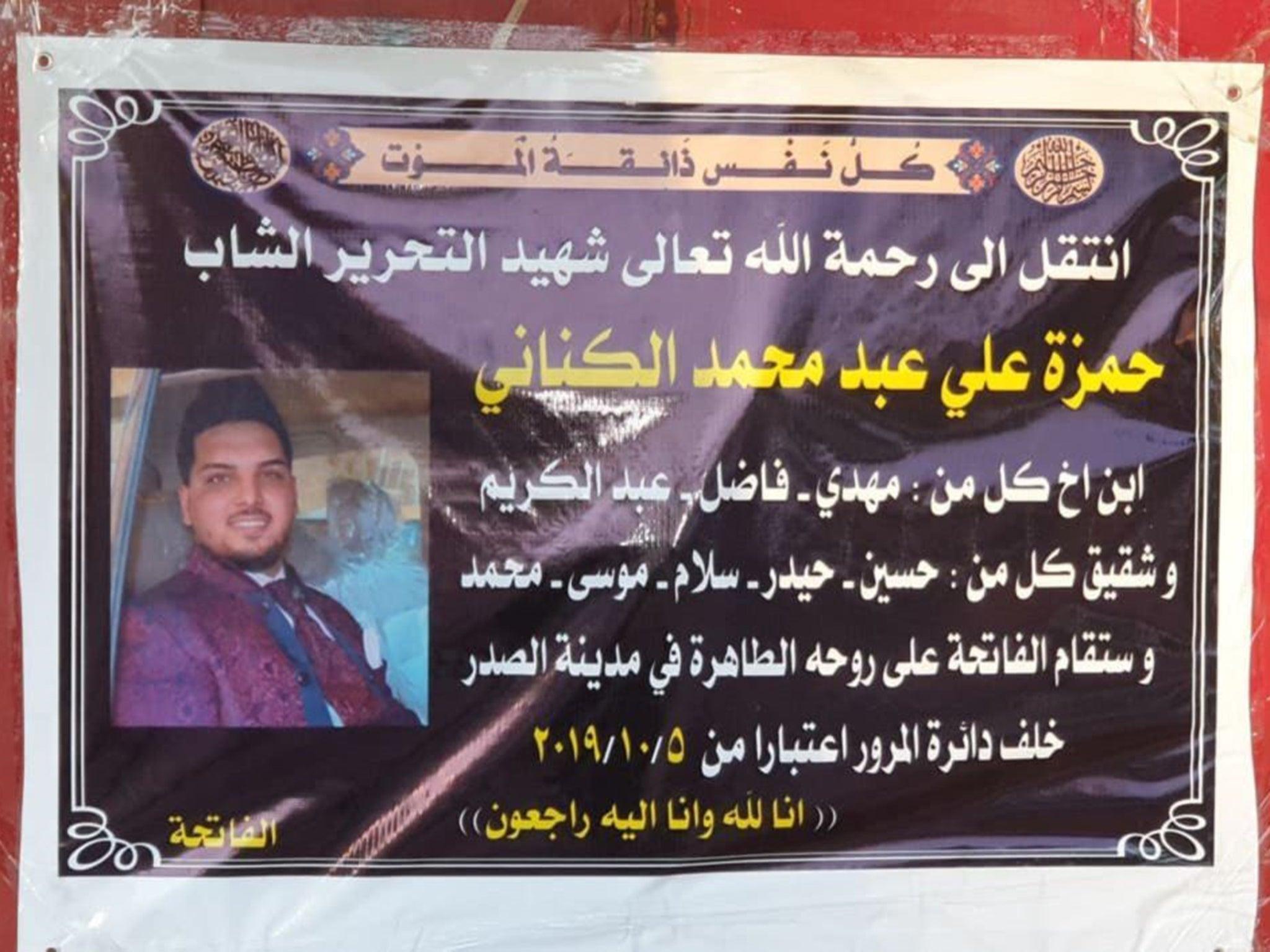
Ali, from Sadr City, was days away from his wedding according to posts on social media. He posed next to a white horse, donning what looked like a crimson tailcoat, for his engagement photoshoot. Hamza worked on construction sites, sold a variety of products from a cart, and sometimes used his friend’s car as a private cab driver. Ali was angry that his several jobs barely met inflated living costs. On 4 October he joined the Tahrir Square demonstrations to protest for a better life. His demands were simple: an end to corruption and more job opportunities.
A bullet to head and one to his leg killed Ali. His family used the picture of him in the crimson suit in his funeral banner. “He always smiled and we wanted people to see his smile one last time”, says a family member. He was one of six brothers.
Ahmed Al Ghezi, 20
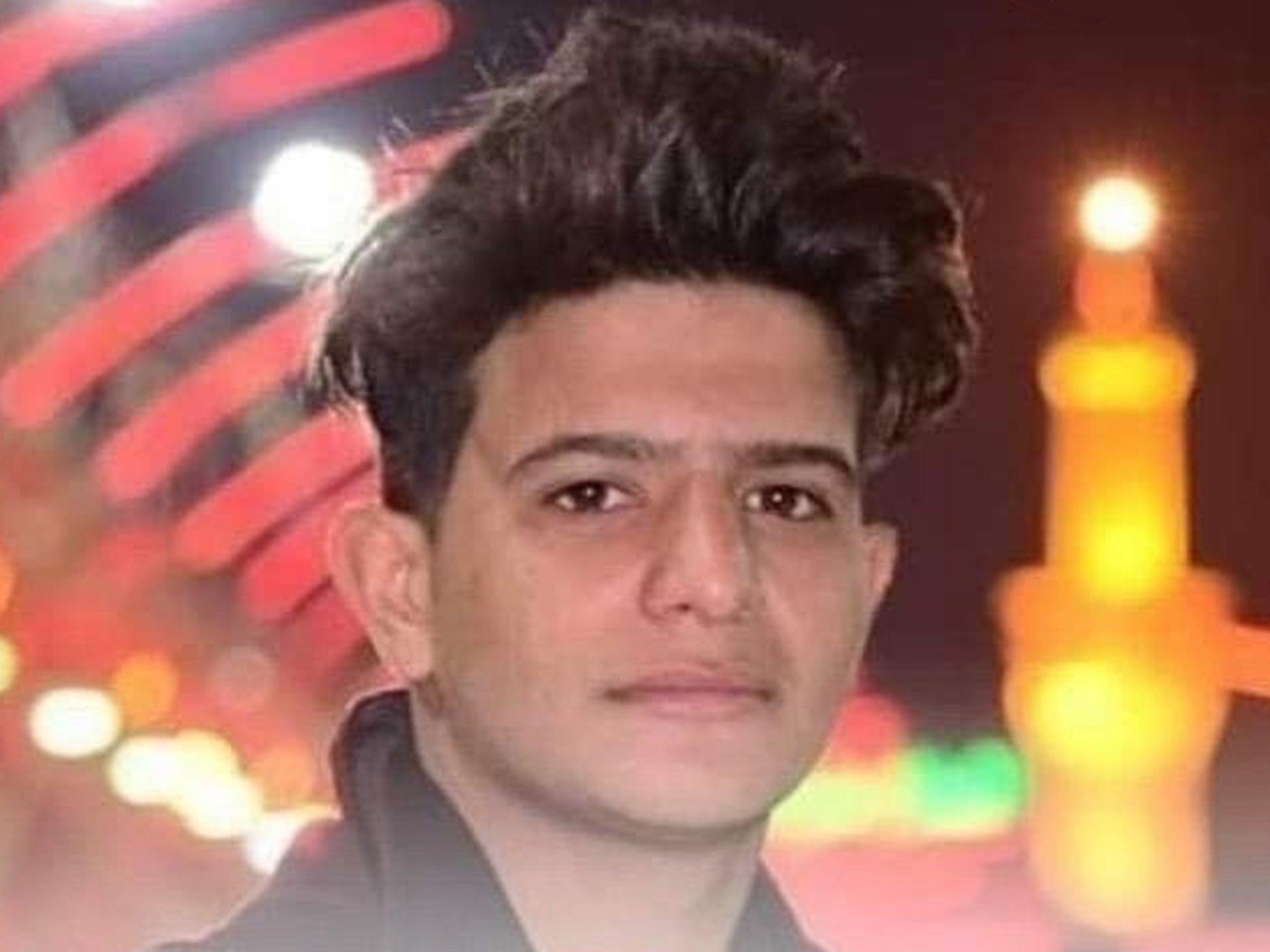
Ghezi grew up in Al-Ur neighbourhood in Baghdad. His father was executed by Baathists not long after his birth. The family struggled for years, and when Ahmed was old enough to work he bought a wagon to sell water and refreshments. He earned money to support his mother, but the once bright student fell behind in school.
At 20 he was still waiting to complete his high school education. “Despite not having a lot Ahmed found reasons to laugh and love life”, says his best friend Ahmed Fadhil.
Ahmed participated in the protests after learning security forces were using live ammunition and many had fallen dead. He was fatally shot on 3 October. Ahmed’s best friend said: “We carried him back to his home, and his mother held his body and wept for hours”.
Muhanned Kamel, 22
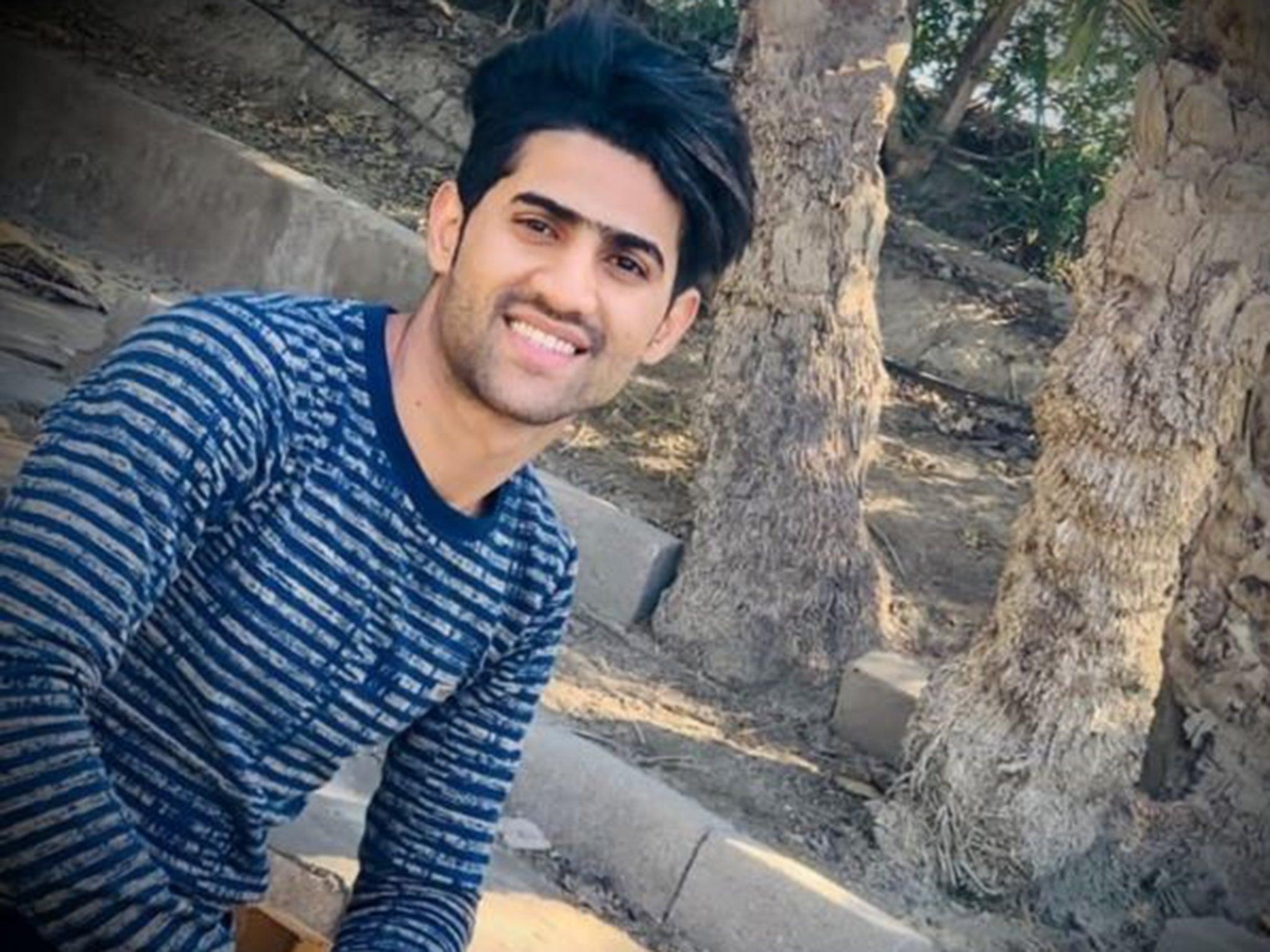
Kamel, from Nassiriyah province, was studying to be a pharmacist at Mustansiriyah University in Baghdad. His friends describe him as a hard-working student and dedicated bookworm who enjoyed poetry and politics. Kamel posted on Facebook that the he was honoured to “stand in protest” against the “resolutions of the corrupt government”. Kamel might have been less concerned than his peers with unemployment – students with medical specialties are guaranteed jobs in the public health sector immediately after graduation in Iraq. Pharmaceutical careers in particular offer great opportunities. He protested what he saw was injustice that could no longer be tolerated. Kamel was shot in Al Haboobi Square on 3 October. On the eve of his death, he wrote: “Dying for Iraq is more noble than living under humiliation.”
Dhia Hussein, 27
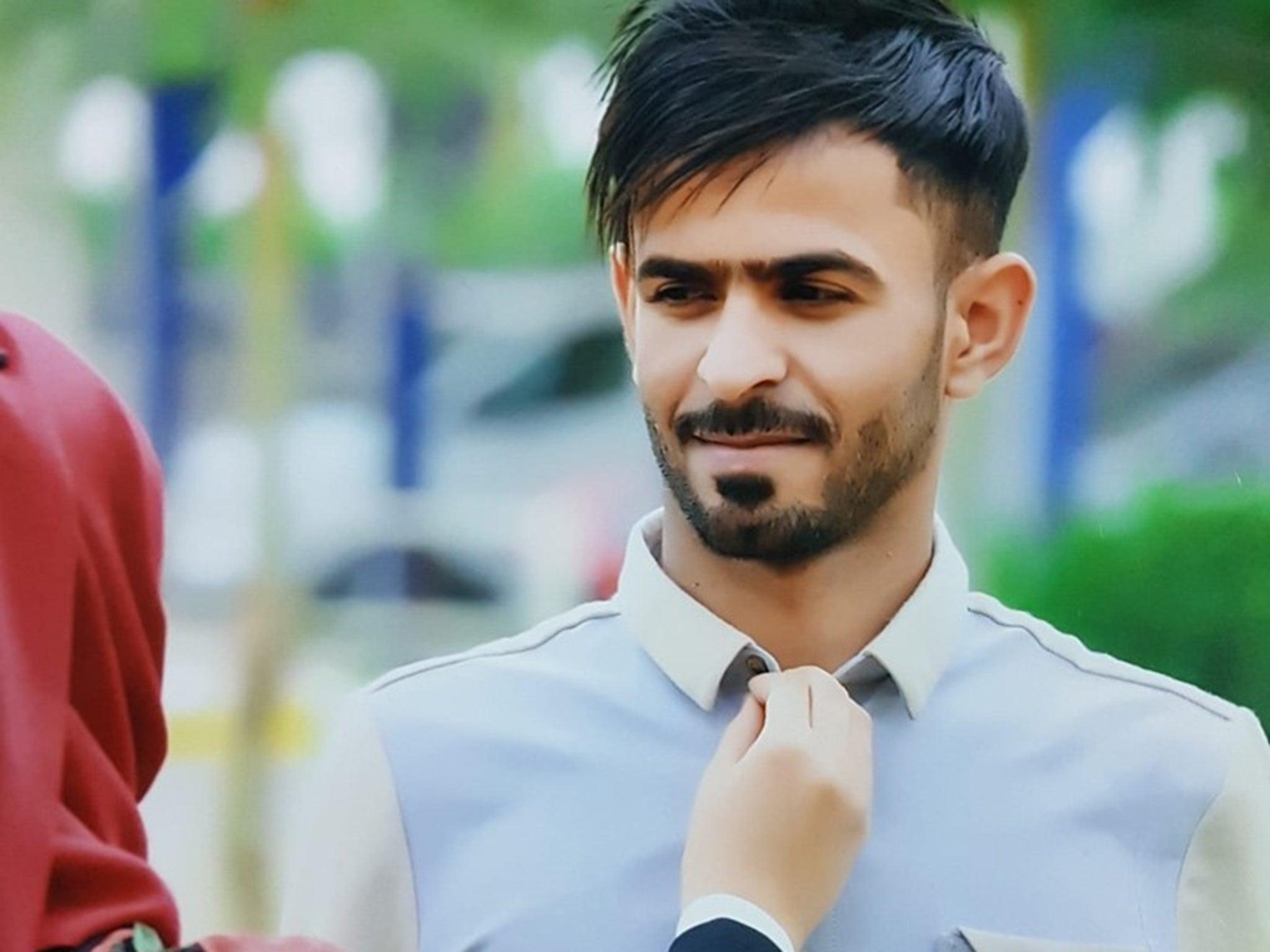
Hussein was married, and had a 6-month-old daughter at the time of his death. He had a degree in Arabic literature but failed to find employment in his field and took on simple manual jobs. His friends say that he was romantic, and loved his wife dearly. Hussein agonised over not providing a better quality of life for his family despite working 16-hour days. He had hoped the protests would urge the government to create work opportunities for college graduates.
In conservative Dhi Qar (Nassiriyah) province where expressions of love are often subtle, Dhia’s public profile picture on Facebook shows his wife adjusting his collar button while he gazes at her in admiration, the caption reading: “My heart finds you only”. His last post hours before his death showed footage of the Iraqi army protecting the protesters. He was shot dead on 2 October near Badr Corps headquarters, according to one of his friends.
Ali Akbar Al Luwaihi, 19
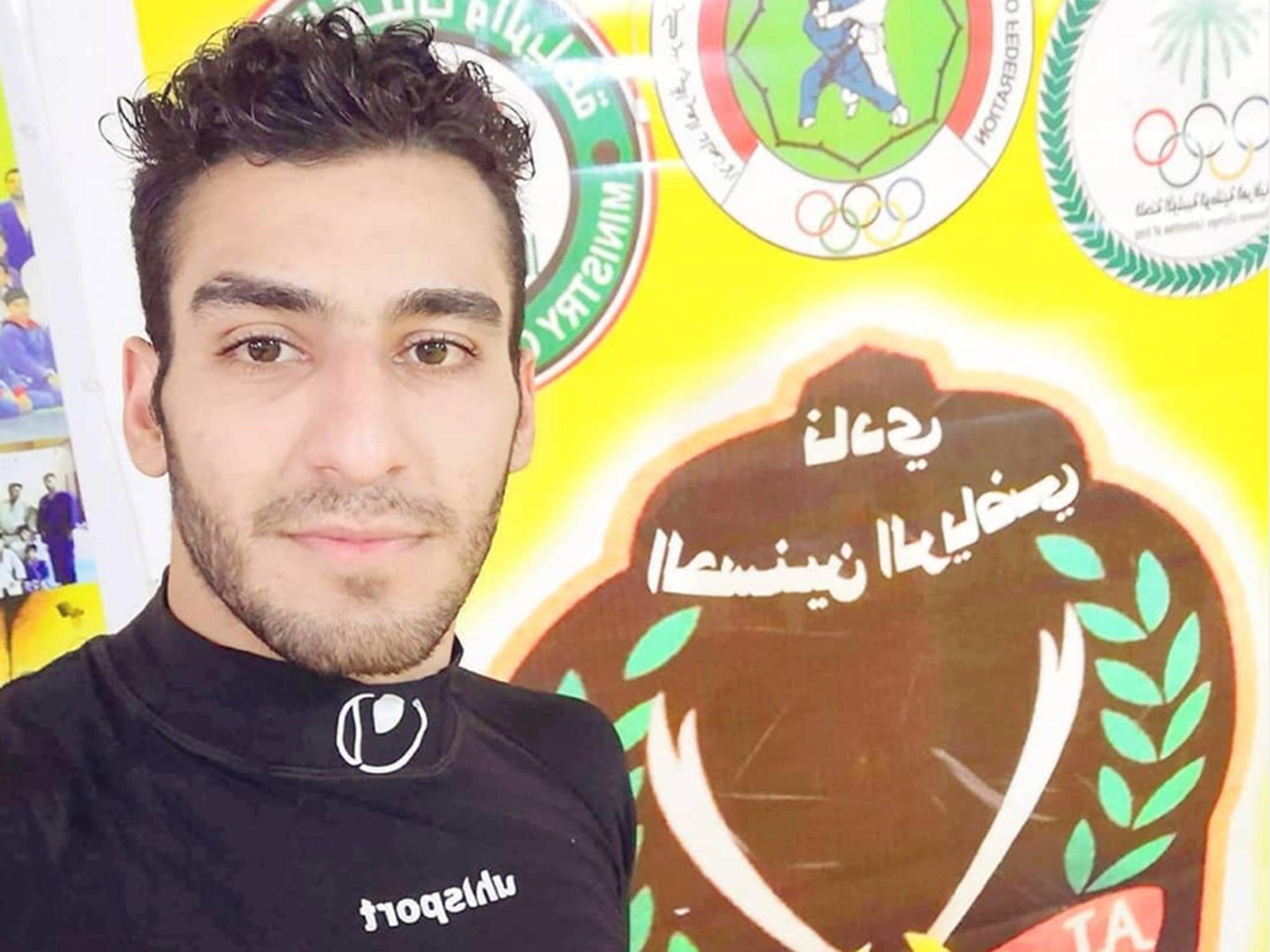
Luwaihi, a professional judoka, was part of Iraq’s national team delegated to compete for the West Asian Championships in Amman, but had to find funds for his trip. “We gathered what we could”, says his father. “It was a little over a million dinars [roughly £650], and he won the gold medal. They [the sports ministry] only gave them flowers at the airport.” On the third day of the protests Luwaihi borrowed 5,000 dinars (£3.25) from a friend, and that was all he had on him when he was shot in the head. His friends painfully mourned him in a video circulating online. His trainer says it is over for the judo team he was in charge of because without “Alawi”, a common nickname for “Ali” in Iraq, nothing feels the same. Luwaihi was one month shy of his 20th birthday.
Mu’ammal al Khafaji, 20
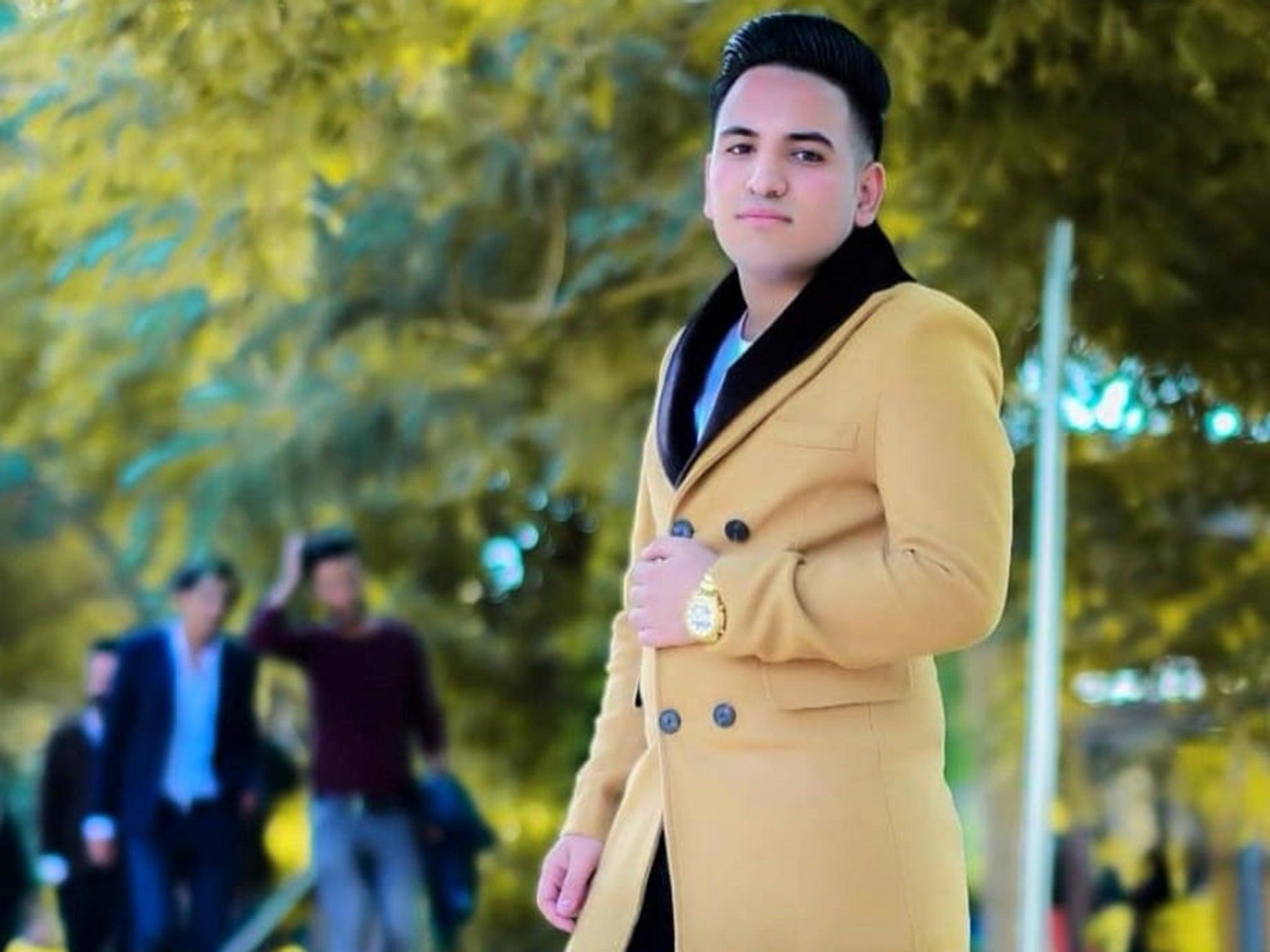
Khafaji was the youngest of three brothers from Kut City in Waset province. He was studying business at university and planning to graduate and emigrate as he had “lost hope in Iraq”, according to his brother. He was a hardly a trouble maker, spending most of the day listening to music and talking to his girlfriend. When the protests began he believed they were different and wanted to voice his frustration in the hope that change for the better was to come. On 4 October a bullet to the head killed Khafaji after he had spent hours helping other protesters affected by teargas. One day after his death his college announced that he had successfully passed all his final exams and had progressed to his third year.
Muntaser Sa’adi
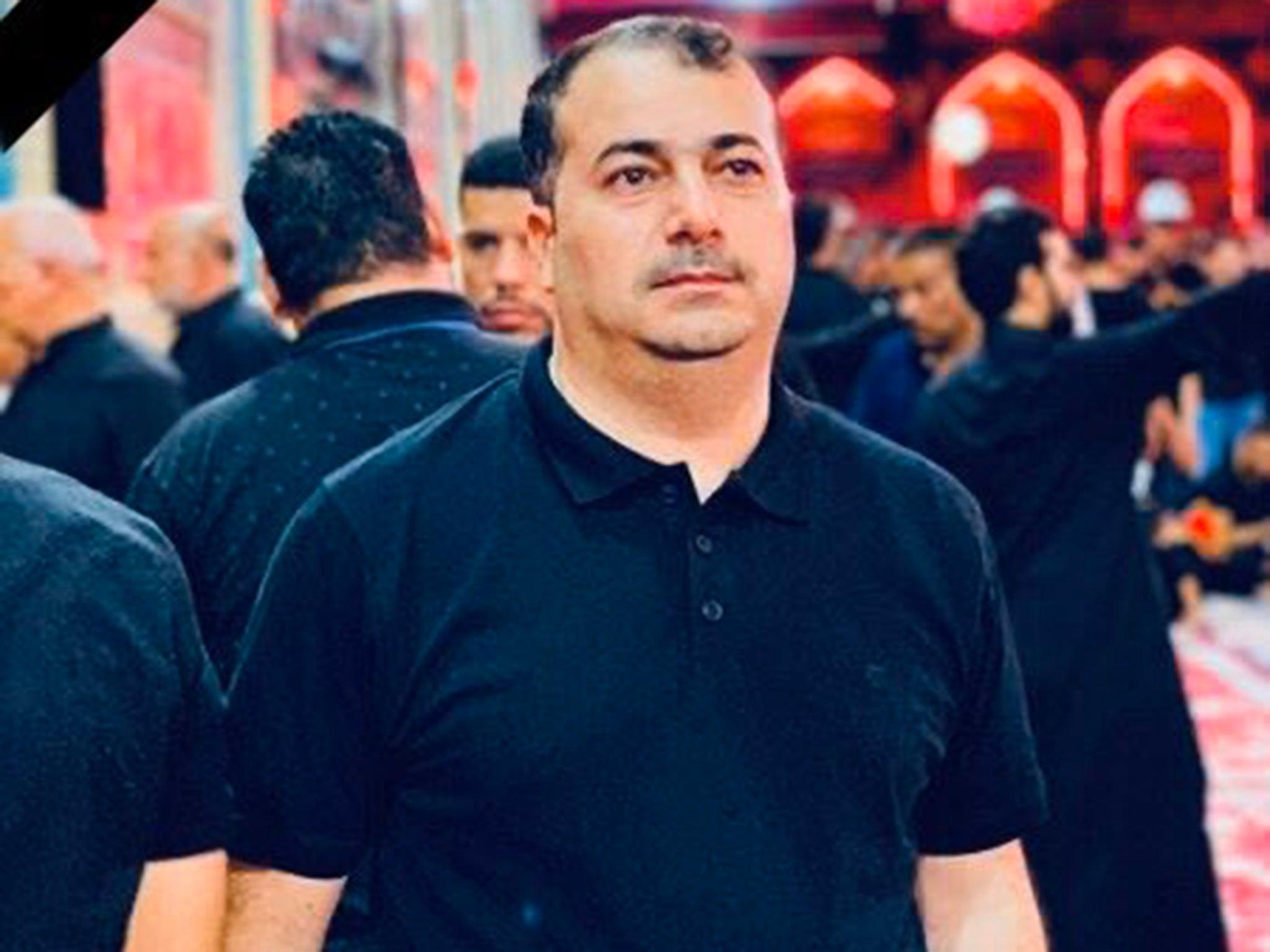
Sa’adi had two little girls, Noor and Aym. He was known as a compassionate paramedic who believed in his mission and did not hesitate to help anyone. On 22 October Sa’adi asked his colleague and friend Hussam at Imam Hussein hospital, in the city of Amara, to make sure that all necessary drugs and medications were available in case protesters might need urgent treatment. “He had the purest soul, unlike anyone,” says Hussam. On Friday night, Mustaser attended the protests to help the injured. He spotted a young man lying on the street and rushed to treat him. According to Hussam, he was shot during clashes between protesters and the Asaib Ahl al-Haq militia the while trying to rescue a stranger.

Join our commenting forum
Join thought-provoking conversations, follow other Independent readers and see their replies
Comments